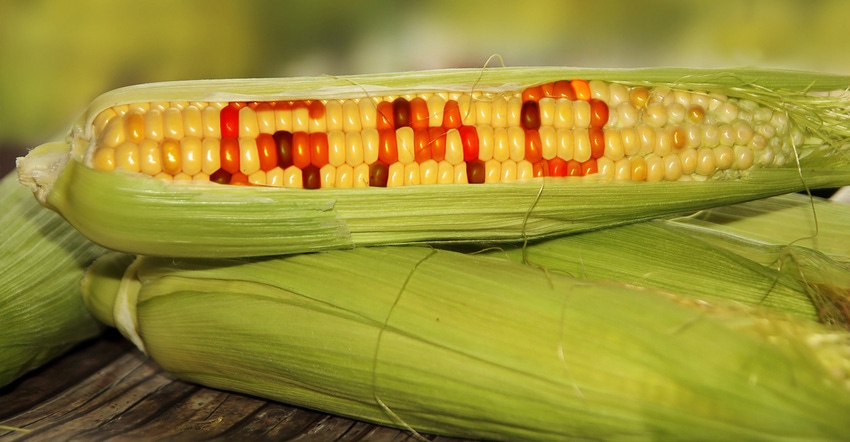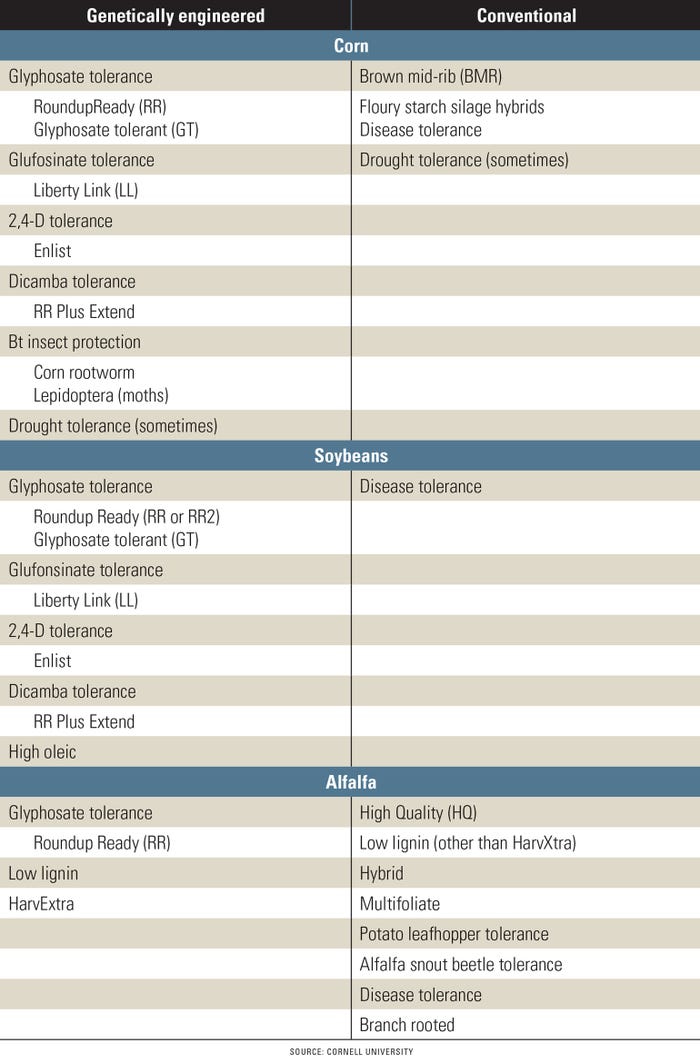April 28, 2017

A great deal of discussion continues on potential markets for GMO-free crops and products, such as milk from animals fed these crops. Here’s a quick primer on the technology from Joe Lawrence, dairy forage systems specialist for Cornell Pro-Dairy.
GMO is the commonly used term for a genetically modified organism. It’s really being misused in this context, says Lawrence. In reality, many things in agriculture are genetically modified compared to their ancestors.
Humans have used selection criteria to propagate crops that better fit their needs for thousands of years. In the last century this has been accelerated by what are now commonly referred to as conventional plant breeding techniques.
Groups looking for GMO-free corn or GMO-free milk are actually referring to genetically engineered (GE) crops. GE is defined as “the deliberate modification of the characteristics of an organism by manipulating its genetic material.” Primary examples are herbicide-tolerant crops and crops with traits that protect them from certain insect pests, notably the Bt trait.
As producers are asked to consider shifting production to GMO-free — with potential price incentives — a number of questions need to be asked and answered. Here are a few of them.
The GE Q and A
Q: What traits are derived from genetic engineering?
A: The accompanying table provides a list of crop traits, which ones are derived from genetic engineering and which ones are derived from natural breeding.

Q: How do conventional varieties/hybrids compare in yield and production cost?
A: Finding clear data on that is difficult. The yield potential of conventional varieties and hybrids is on par with their genetically engineered counterparts. However, the cost, management considerations and potential risk for problems during the growing season can vary widely and produce scenarios that favor either conventional or GE crops.
Q: What is GMO contamination?
A: In some cases, a GE plant will pollinate a conventional plant. That contamination can be found in seed used for planting as seed. That’s because seed production is often concentrated in certain regions, and there is likely to be conventional and GE seed produced in those areas.
In the case of GMO-free milk, guidelines are being developed regarding total amount of contamination in the total ration fed to the dairy herd. In this case the producer needs to account for potential contamination from all feed ingredients from homegrown forages to purchased grains and other additives.
The producer assumes a great deal of risk in assuring the final product remains under defined thresholds. When purchasing seed for planting or feed ingredients, it will be important to verify with the supplier if they have tested their products and what level of contamination has been found.
Source: Cornell Pro-Dairy
You May Also Like




